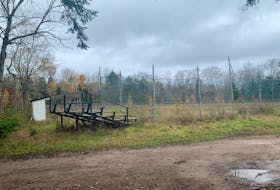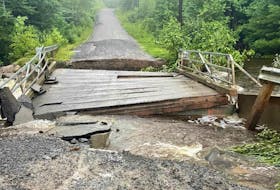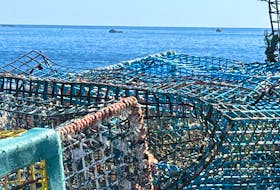PICTOU LANDING
Residents of Pictou Landing were updated Wednesday about plans to clean up Boat Harbour, and those attending had a lot of questions about how the remediation will work.
Guests at a consultation at the Pictou Landing fire hall were told the government is working with GHD Consulting to investigate the water, sediments and soil at Boat Harbour to come up with a treatment solution for the contaminants in the wetland.
Boat Harbour is the receiving area for pulp mill effluent from Northern Pulp.
Christine Skirth, a project manager with GHD Consulting, spoke about past tests related to possible treatment, as well as an upcoming environmental impact assessment to determine the best method of treatment.
The assessment would take the health of humans, wildlife, and the environment into account, says information provided from the provincial government.
Of the many questions that arose, one guest asked officials about the method of treatment to be used.
Skirth explained that the main method of reclamation for Boat Harbour entails treatment of sludge with something with an apparatus called a geo-tube.
The total area that needs to be remediated is 38 areas of wetland. Ken Swain, a project lead for the remediation project with Nova Scotia Lands, said there is a layer of “fluffy” sludge that needs to be treated that is a little less than a foot thick.
Skirth said the sludge would be pumped through the geo-tube, “which is like a big fabric bag,” in which solids and sediments are trapped, and the filtered water goes through, leaving “all the fine articles remaining in the bag.”
She said it will be conducted in bench scale and pilot scale testing to ensure the best methodology. Approximately 5,000 cubic metres will be tested.
One resident raised an issue about the water in the area, asking about ground water contamination, and if Boat Harbour could affect residential water supplies in the community.
Don Burke, executive director of Environmental Remediation with NS Lands, said testing has determined there is extremely low soil permeability in the ground surrounding Boat Harbor, preventing contaminants from getting into aquifers and soil in area surrounding the “bowl-like” Boat Harbour.
When asked how the water would be put through the geo-tubes, Skirth said it would be brought up similar to going through augers of a snow blower and vacuumed, with sludge and sediment and pumped into the geo-tubes.
One guest asked what sorts of materials are in the sediments, and was informed that it’s primarily an assortment of metals that would be removed with a carbon treatment after being isolated in “de-watered” sludge. Treated material will be stored in containment cells.
One guest – who wished to remain anonymous when talking to The News – vocalized concerns, saying, “the projected cost is $133 million, and the taxpayers are going to be paying that, and probably paying $200 million, at least.
“It’s gone from $20 million to $133 million, and they have no idea what’s ahead of them. They’re going to take one million cubic metres of sludge and contaminated soil.” He maintained he’s not against the idea of remediation, but wants “to make sure things are done right.”
Sandy Denny, another guest, said he thought the plan was good, but wants to see more people attend information sessions. “I hope that more people take an interest, and come to these kinds of meetings.”
The remediation process itself is the last of four “streams” of work ongoing with the project, explained Skirth. The other “streams” include scientific studies on the area, regulatory work to ensure that everything is done within the writ of environmental laws – and socio-economic engagement and implementation, which entails contractor selection, monitoring, and outreach and communications.
According to information released from the Government of Nova Scotia, the planning stages of remediation are anticipated to be complete by 2019. The earliest anticipated date for the cleanup to begin is early 2020.









